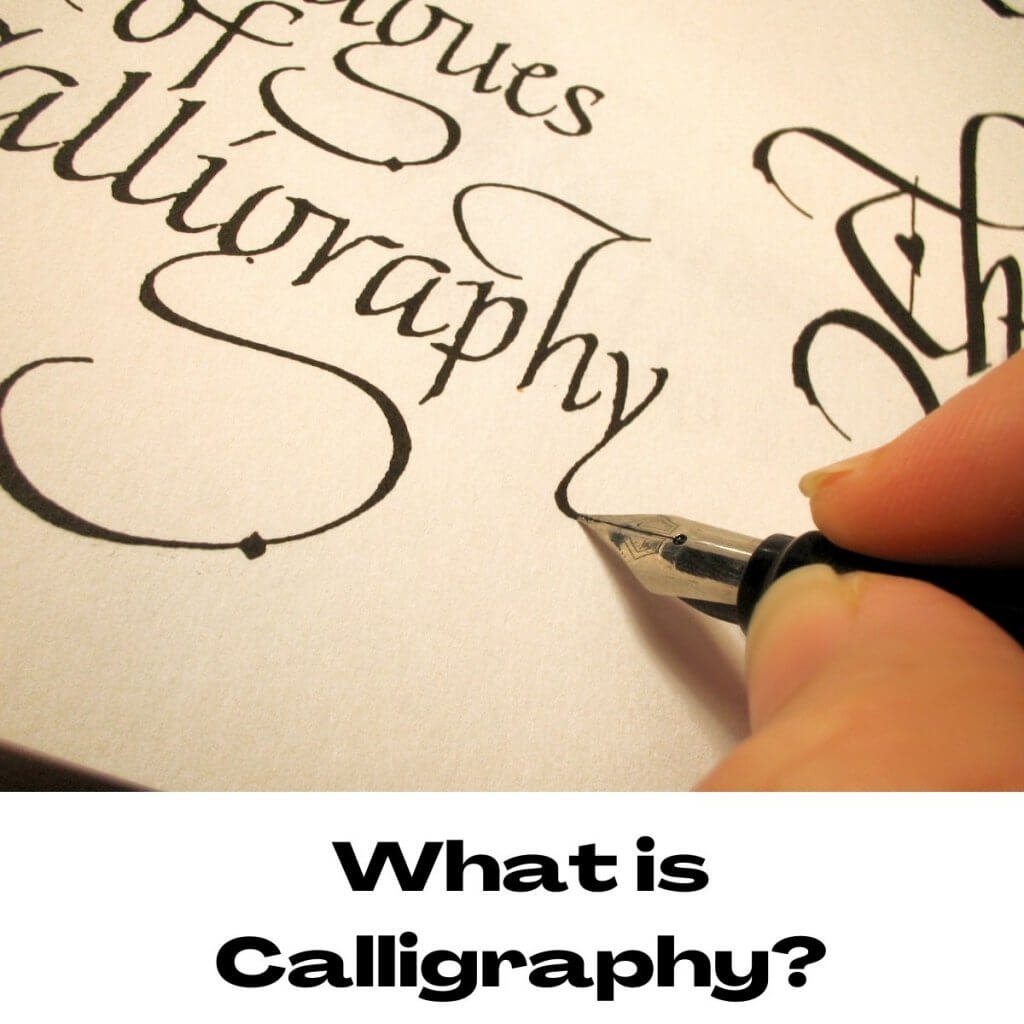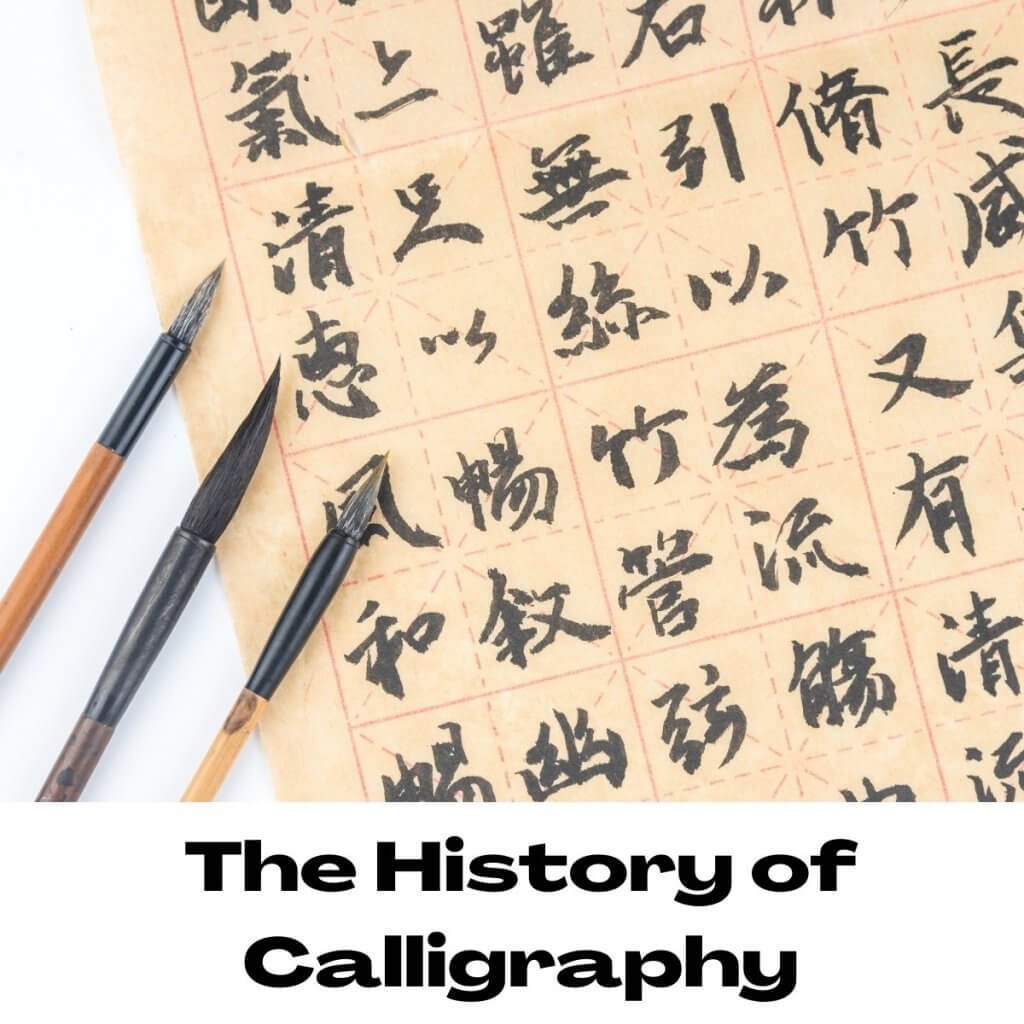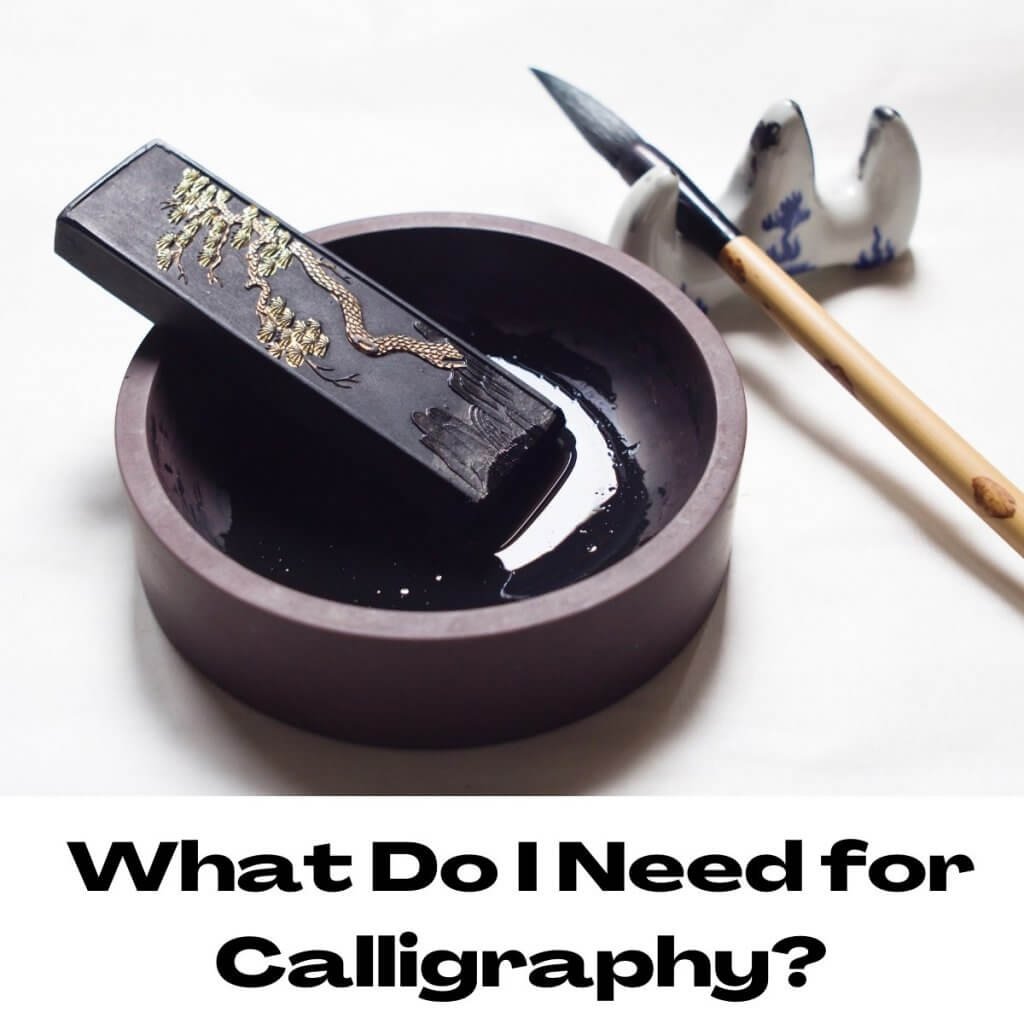Are you captivated by calligraphy and always wanted to try it yourself? This Guide to Calligraphy for beginners will teach you everything you need to start with your new hobby.
Calligraphy, a word with Greek history, can be translated directly to “beautiful handwriting”?
Still, it is more than just handwriting to those who practice this craft. Many skilled in calligraphy see the symbols they create as unique components to a larger piece.
Each character you make is an element in the greater scheme of your artwork.
When you delve into this skill, you’ll learn that this is a very personal craft, just as any other art form is.
What is Calligraphy?
Calligraphy is the art of creating beautiful work through handwritten lettering.

This art form is generally about consistency and proper proportions, but it’s more than just perfection that you will be displaying. You’ll incorporate yourself into your work, adding your own personal touch as you learn.
Various types of calligraphy include Arabic, Indic, and Greek. In modern times, calligraphy has been moved more in the direction of contemporary art due to ever-changing aesthetics.
The History of Calligraphy
Calligraphy has a long history that can be traced back to the Shang Dynasty days, which lasted from 1600 to 1046 BC.

It became more common going into the 1st century AD with a revitalization of this unique skill in the Han Dynasty.
As calligraphy developed in China, other parts of the world, such as Egypt, simultaneously developed their own systems.
While calligraphy was developing around the globe, each culture held a different finished product and had the same principles.
It was revamped in the Western world when English author William Morris began teaching calligraphy in the 1870s.
Calligraphy has gone through many changes since its root, being utilized on both traditional and non-traditional bases. It had its fair share of rises and falls until it was finally cemented as the art form it truly is.
Calligraphy in Modern Times
Modern-day calligraphy is unique in its own sense as it has been going through revivals for centuries.

With an increase in popularity in the later years of the 20th century, calligraphy began steering closer to a contemporary art style as what is known as hand-lettering.
Calligraphy today can be seen in so many different places. Within the last few centuries, the remarkable rise in calligraphy has witnessed the development of jobs based solely on this art form.
You can see the work of calligraphers on invitations or envelopes, particularly on wedding invitations. Calligraphy is also found framed in some locations, providing décor to the setting.
For the purposes of this guide, we’ll be reviewing copperplate calligraphy, an umbrella term for pointed pen calligraphy.
Perfect Hobby For You:
What Do I Need for Calligraphy?
To begin creating calligraphic art pieces, you’ll need to be sure to have the proper writing utensil. There are three recommendations for official calligraphy tools: a dip pen, a cartridge pen, or a disposable pen.

Dip Pen
The dip pen is the traditional calligraphy method and offers choices from a broader range of products.
You can select different nibs for various writing styles and special inks.
If you’d like a pen holder, traditional dip pens also have a more generous selection of those. This isn’t even mentioning how dip pens are reusable!
Nibs are metal headings to your pen, so you can interchange them as you need to for whatever tone you’re trying to set with your calligraphy.
However, be warned that the classic dip pen method can be messy. You can find a calligraphy kit on Amazon with an array of nibs for you to pick from and the ink already included!
Cartridge Pen
Cartridge pens are not as messy as the dip pens previously mentioned, but they also don’t have many customization options.
The inks produced for dip pens do not work with cartridge pens and can clog them if you attempt to utilize the inks. There’s also a more limited selection of nibs for your pens.
There are also kits available for calligraphy with cartridge pens, shown with this deal from Mont Marte, which includes pens, nibs, and ink cartridges for you to begin.
There is no shame in not investing immediately in the traditional dip pen – everyone has different preferences!
Disposable Pen
Disposable pens are bought with a nib and with ink inside of them. Therefore, it is the most comfortable option if you are worried about making a mess or unsure if you’ll stick with calligraphy for the long run.
These pens are also known as fountain pens by some. Disposable pens are sadly non-refillable, and it isn’t typical for you to change the nibs.
Since these pens are disposable, they’re not available in kits but in simple packs such as this 7-count of fountain pens from PILOT.
Paper/Surface
The base is up to your preferences, but some materials will be better for this craft than others. The right paper will ensure your nibs don’t cause any damage and your ink doesn’t feather.
There are pads designed explicitly for calligraphy. You can find one such pad here by Strathmore.
Many of these pads (like this one) have lines to provide guides to help you practice.
Extra Material as Needed
If you need extra nibs or ink for your cartridge or dip pens, you have a ton of choices to look through!
Look for your personal style in a pen nib if you plan to produce calligraphy for a long time.
Making the art form uniquely yours adds passion and helps you move forward even through tough times while learning the skill.
- Books
- Classes
- Resources
How to Do Calligraphy with a Pen
Gather your materials

Before you can begin writing in a calligraphic style, you’ll need to be sure you have all your materials.
Try to get everything so when you are sitting down to work on this skill, you’ll be able to focus on the task at hand.
Prepare your crafting area.
Preparing your craft area is another crucial step. You’ll want to make sure you dedicate enough space to this skill without too much clutter around you.
Find inspiration.
Finding inspiration can be difficult if you haven’t thought about it before.
There are so many different types of calligraphy that it could probably make your head spin.
Quite a few workbooks are available for you to start on if you don’t have any ideas, which is perfectly okay!
Get going!
When you have your materials gathered, your inspiration found, and a free slot of time in your day, it’s time to party!
You are going to set off on your journey of calligraphy! If you’re nervous, you have the option of following along a video, thanks to the array of tutorials that can be found!
If you want to learn completely on your own, just be sure to check your work so you can improve after!
Celebrate!
After you add those finishing touches, you’ll understand why it’s time to celebrate.
Try not to be hard on yourself if your project didn’t come out the way you expected.
Be proud of yourself for taking the first step in learning a new skill! The first calligraphic piece of many has just been completed!
Calligraphy Tutorials for Beginners
If you prefer working on your own but still having instruction, you can find a lot of great tutorial videos out there as well. Here are a few very good calligraphy for beginners instruction videos
For beginners, these are some great videos to check out.
Conclusion
Calligraphy is a timeless craft that has aged well despite the millennia that have passed since its initial development.
If you would like to try calligraphy, consider yourself one among many! There are many tutorials for whatever look you want to explore.
It all depends on your personal preferences. Just remember, calligraphy is more than just pretty words on paper. It’s an art form, and it’s something that can create modern masterpieces as we know them.








